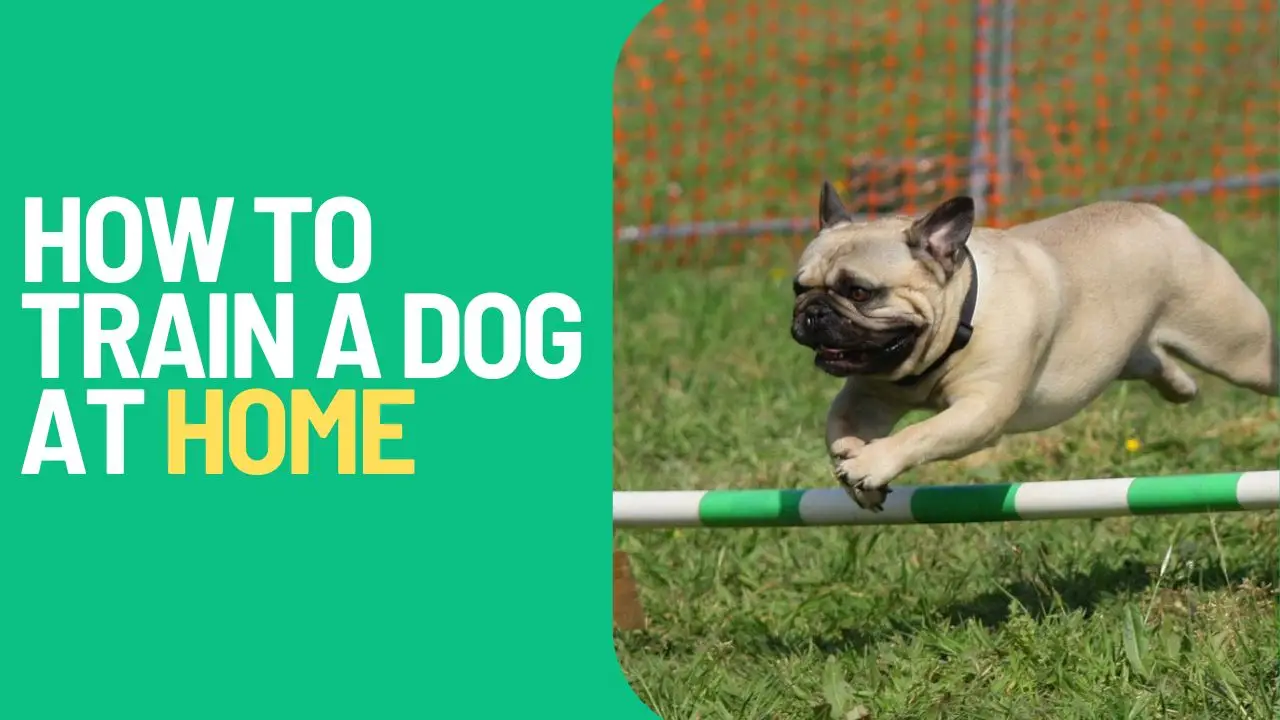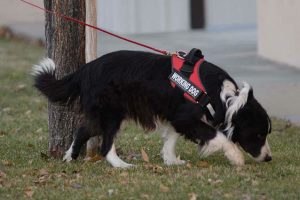Introduction of How To Train a Dog at Home
Training a dog at home can be a rewarding and fulfilling experience for both you and your dog. It allows you to establish a strong bond and effectively communicate with your dog. Whether you have a new puppy or an older dog, training provides mental stimulation, helps with behaviour modification, and promotes obedience.
In this comprehensive guide, we will explore the fundamental principles of dog training, provide step-by-step instructions for various training techniques, address common challenges, and offer tips for specific situations. By following this guide, you’ll learn how to train a dog at home effectively.
Table of Contents
Understanding Basic Dog Training Principles
Positive Reinforcement
Effective dog training is built on positive reinforcement. It involves rewarding desired behaviours to encourage their repetition. By using treats, praise, and affection, you can reinforce good behaviour and motivate your dog to continue learning.
Consistency
Consistency is key when training a dog. It is important to use the same cues, commands, and rewards consistently to avoid confusion. Consistency also applies to your expectations and boundaries, ensuring that your dog understands what is expected of them.
Patience
Training takes time, and patience is vital throughout the process. Dogs learn at their own pace, so it’s essential to be patient and avoid getting frustrated. Celebrate small victories and maintain a positive attitude to keep your dog engaged and motivated.
Creating a Training Plan
Before diving into training, it’s essential to create a well-thought-out training plan. This will help you set goals, choose appropriate training techniques, and establish a consistent routine.
Choosing Training Techniques
There are various training techniques available, including positive reinforcement, clicker training, and target training. Research each method and select the ones that align with your training goals and your dog’s temperament.
Dog Training Tips for Beginners
If you’re new to dog training, it’s important to start with the basics. They need to have a solid foundation of obedience training. Teaching your dog commands such as sit, stay, and come will make it easier for them to understand and follow your instructions when you’re not around. Remember to keep training sessions short and enjoyable for your dog, as they have a limited attention span.
Basic Training Commands for Dog
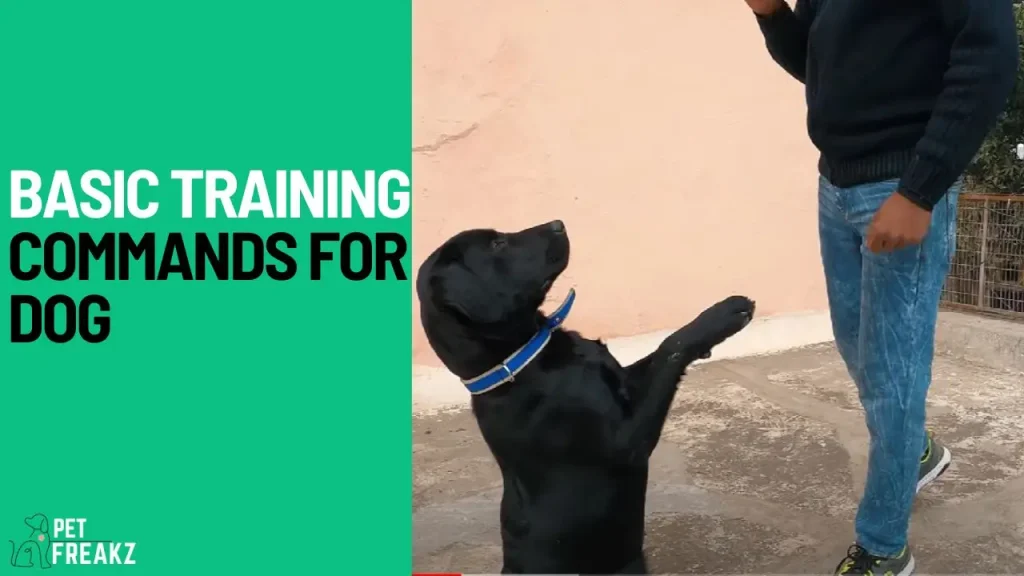
Teaching your dog essential commands lays the foundation for good behaviour and effective communication. Here are four vital commands every dog should learn:
Sit
Teaching your dog to sit on command is a fundamental and very useful skill. Begin by holding a treat close to your dog’s nose, then move it upward. As your dog’s head follows the treat, its bottom will naturally lower into a sitting position. Once seated, say “sit” and reward them with the treat and praise.
Stay
The “stay” command helps your dog learn impulse control and remain in one place until given permission to move. Start the training with your dog in a sitting position. With your hand out in a stop gesture, say “stay” and take a step back. Gradually increase the distance and duration as your dog becomes more comfortable.
Lie Down
The “lie down” command encourages your dog to lie down on command. Again start with your dog in a sitting position. Hold a treat near their nose and slowly lower it towards the floor. As your dog follows the treat, their body will naturally lower. Say “lie down” once they are in the down position, then praise them.
Come
The “come” command ensures that your dog comes to you when called. Start by kneeling or crouching down and say “come” while gently patting your leg. Use an enthusiastic tone to encourage your dog to approach you. Give them praise and a treat when they get to you.
House Training
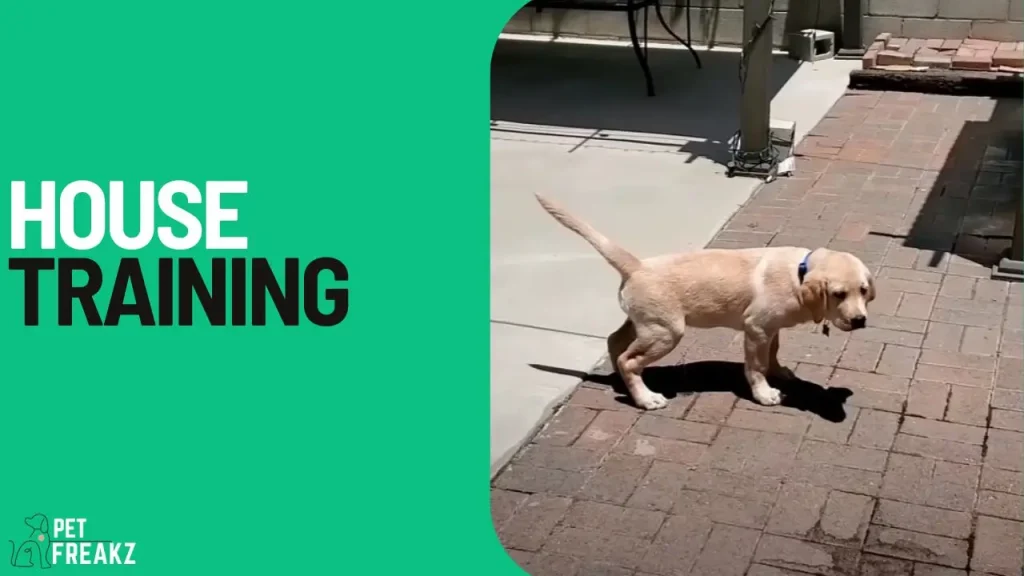
House training is a vital aspect of owning a dog. It involves teaching your dog appropriate bathroom habits and preventing accidents inside the house.
Crate Training
Crate training is an effective method for house training. Introduce your dog to a crate or a confined space and make it a positive and comfortable environment. Gradually increase the time your dog spends in the crate and reward them for using it correctly.
Establishing a Bathroom Routine
Establishing a consistent bathroom routine is essential for house training. Regularly take your dog outside, particularly after meals, naps, and playtime. Use a specific command, such as “go potty,” to associate the action with the command. Reward your dog when they eliminate in the appropriate area.
Leash Training and Walking
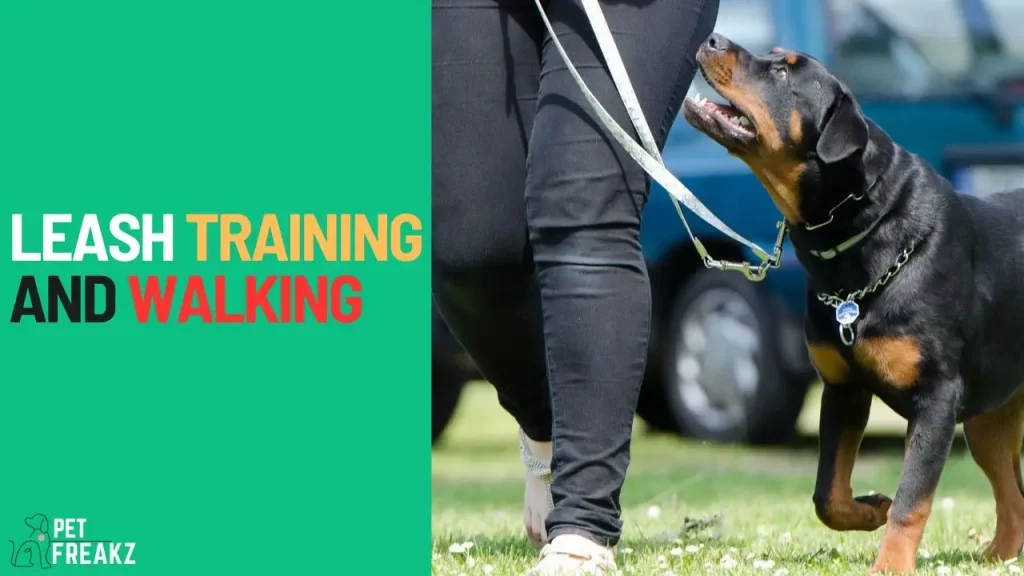
Leash training is essential for safe and enjoyable walks with your dog. It teaches them to walk beside you without pulling or becoming overly excited.
Introducing the Leash
Start by introducing your dog to the leash gradually. Allow them to sniff and investigate it before attaching it to their collar or harness. Begin with short walks in a familiar and low-distraction environment.
Teaching Loose Leash Walking
Teaching your dog to walk on a loose leash involves rewarding them for walking calmly beside you without pulling. Use treats and positive reinforcement to encourage the desired behaviour. If your dog starts pulling, stop walking and wait for them to calm down before resuming.
Dealing with Pulling
If your dog pulls on the leash, try using a no-pull harness or a head halter to provide better control. Additionally, change direction whenever your dog starts pulling to redirect their attention and discourage pulling behaviour.
Basic Obedience Training
Basic obedience training includes teaching your dog to respond to commands consistently and reliably. These commands help ensure your dog’s safety and well-being.
Teaching Commands
Use positive reinforcement to teach commands like “sit,” “stay,” “lie down,” and “come.” Break down each command into simple steps and gradually increase difficulty. Be patient and reward your dog for successful execution.
Reinforcing Good Behavior
Consistently reinforce good behaviour by rewarding your dog with treats, praise, and affection. This positive reinforcement strengthens the association between the desired behaviour and the reward, increasing the likelihood of repetition.
Correcting Unwanted Behavior
When your dog displays unwanted behaviour, address it calmly and consistently. Redirect their attention to appropriate behaviour and reward them for complying. Avoid using punishment-based techniques since they could weaken your relationship with your dog’s trust.
Socialization and Behavioral Training
Socialization and behavioural training are crucial for ensuring your dog is well-adjusted and can interact positively with people and other animals.
Exposing Your Dog to New Environments
Expose your dog to various environments, sounds, and experiences from a young age. Gradually introduce them to new people, places, and situations, ensuring positive and controlled interactions.
Properly Introducing Your Dog to People and Other Animals
When introducing your dog to new people or animals, do so in a calm and controlled manner. Use positive reinforcement and reward your dog for calm and friendly behaviour. Keep a close eye on interactions and step in if required.
Advanced Training Techniques
Once your dog has mastered the basic commands, you can explore advanced training techniques to challenge them mentally and physically.
Agility Training
Training your dog to navigate through obstacles like jumps, tunnels, and weave poles is known as agility. It promotes physical fitness, coordination, and mental stimulation. Consider enrolling in agility classes or setting up an agility course at home.
Clicker Training
Clicker training is a method that uses a clicker device to mark desired behaviour, followed by a reward. The clicker serves as a precise marker of the exact moment your dog performs the desired action. This technique enhances communication and accelerates learning.
Target Training
Target training involves teaching your dog to touch a specific object, such as your hand or a target stick, with their nose or paw. This technique is useful for shaping complex behaviours and teaching advanced tricks.
How to Train a Dog to Stay Alone at Home
Training a dog to stay alone at home can be challenging, especially if your furry friend is used to constant companionship. Many dogs suffer from separation anxiety when they are left alone. They may exhibit signs of distress such as excessive barking, destructive chewing, or soiling the house.
To overcome these challenges, it is important to start with short periods of alone time and gradually increase the duration as your dog becomes more comfortable. Creating a safe and cozy space for your dog, providing mental stimulation through toys or puzzles, and using positive reinforcement techniques can also help alleviate separation anxiety. Consistency and patience are key when dealing with any challenges that may arise during the training process.
How to Train a Reactive Dog at Home
Reactive dogs, those that display aggressive or fearful behaviour towards people or other animals, require special attention when training them to stay alone at home. It is important to create a safe and controlled environment for both your dog’s and others’ safety.
Start by identifying the triggers that cause your dog’s reactive behaviour and work on desensitizing them through positive reinforcement training. Gradual exposure to stimuli that trigger their reactivity can help them learn to remain calm and relaxed when alone. Seek professional help from a certified dog trainer or behaviourist experienced in working with reactive dogs to ensure you’re utilizing the most effective training methods.
Conclusion
Training your dog at home is not an easy thing to do. By understanding basic training principles, creating a training plan, and implementing various techniques, you can train your dog at home. Throughout the training process, remember to be patient, consistent and to give positive reinforcement. Celebrate small victories and adjust your training plan as needed. With time and dedication, you can successfully train your dog at home.
FAQs
Can I train my dog at home without professional help?
Yes, many dog owners successfully train their dogs at home. However, seeking professional help can provide guidance and expertise, especially for complex behavioural issues.
How long does it take to train a dog?
The duration of training varies depending on the dog’s breed, age, temperament, and complexity of the skills being taught. Throughout the training process, it is important to be patient and consistent.
What should I do if my dog doesn’t respond to the training techniques?
If your dog doesn’t respond to certain techniques, reassess your approach and consider trying alternative methods. Consulting a professional trainer might be useful information.
Is it possible to train an older dog?
Yes, dogs of all ages can be trained. Older dogs may require additional patience and adjustments to accommodate any physical limitations or health issues they may have.
Can I use punishment-based methods for training?
It is generally recommended to use positive reinforcement-based training methods. Punishment-based methods can be counterproductive, may harm the bond between you and your dog, and potentially worsen behavioural issues.
